On November 20, the team of Prof. Chen Liangwan and Prof. Dai Xiaofu from the Department of Cardiac Surgery of Fujian Union Medical College Hospital successfully removed an artificial heart (left ventricular assist device, LVAD) implanted 2 years ago for a heart failure patient with recovered cardiac function, which is the first case of LVAD removal using percutaneous access occlusion surgery in Fujian Province. This procedure innovatively utilizes a non-invasive or minimally invasive approach that avoids the risk of reopening the chest and provides a new option for LVAD withdrawal therapy in patients with LVAD.
Prof. Chen Liangwan introduced that, with the passage of time, some patients' cardiac function has been fully recovered, at which time the LVAD needs to be withdrawn, or there are some complications of the LVAD, such as infections, bleeding, blood clots, device malfunctions, etc., which may need to be withdrawn from the LVAD. traditional LVAD withdrawal surgery needs to open up the chest again to remove the pump body and tubes on the heart, which is a high-risk surgery, and it may lead to serious consequences such as bleeding, infections, pericardial tamponade and so on. , pericardial tamponade and other serious consequences. However, LVAD removal using percutaneous approach blockage completely avoids the need for another high-risk surgery, and uses a minimally invasive or even non-invasive approach to help LVAD patients receive treatment.
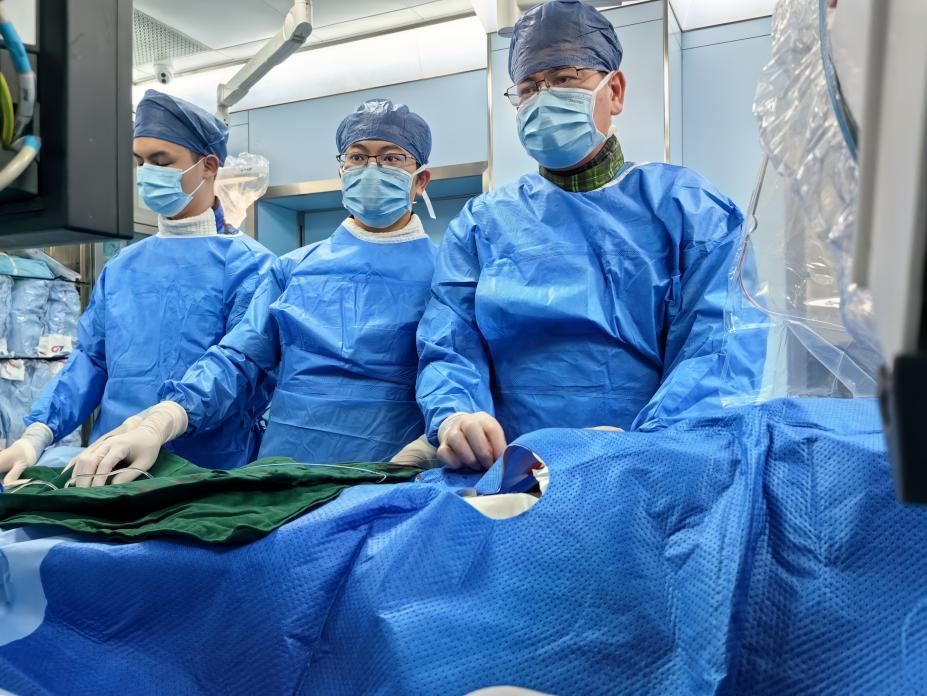
Information for patients
· 51 years old, Mr. Zhang (pseudonym)
· LVAD implanted 2 years ago for heart failure
· Normal life resumed thereafter
· Cardiac function has been completely recovered in several recent follow-ups
· Indication of LVAD withdrawal
Treatment strategies
In order to reduce the risk of LVAD removal surgery, the cardiothoracic surgery team of Fujian Union Medical College Hospital (FUMCH) decided to adopt a new approach by using percutaneous access occlusion, in which the "arterial conduit occlusion umbrella" is sent through the catheter into the artificial conduit of the LVAD to block the blood flow of the conduit to achieve the removal of the LVAD to disable the function of the LVAD, and to truncate the drive line, the severed end of the percutaneous embedded, so as to realize the minimally invasive removal of the LVAD.
The surgery was performed by the team of Cardiac Surgery Professors Chen Liangwan and Dai Xiaofu, and the operation took only 30 minutes. The advantage of this method is that it is less traumatic and less risky, and Mr. Zhang has recovered well after the operation, and his heart is as good as a normal person's without any complication.
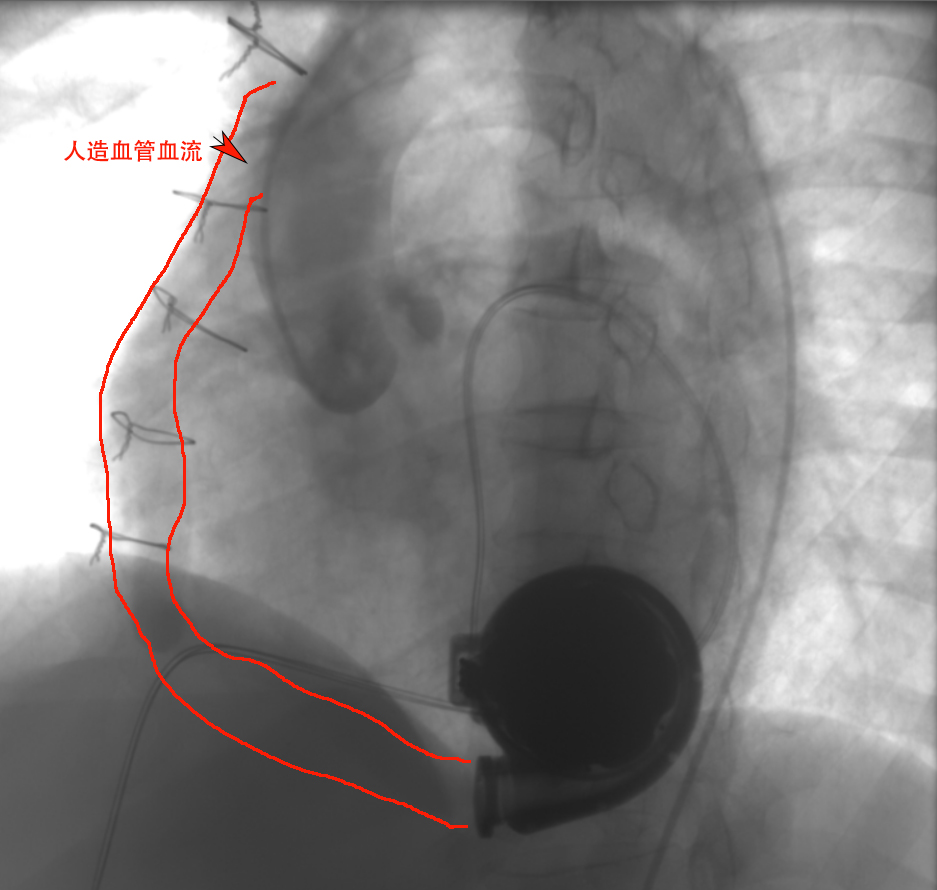
pre-sealing contrast
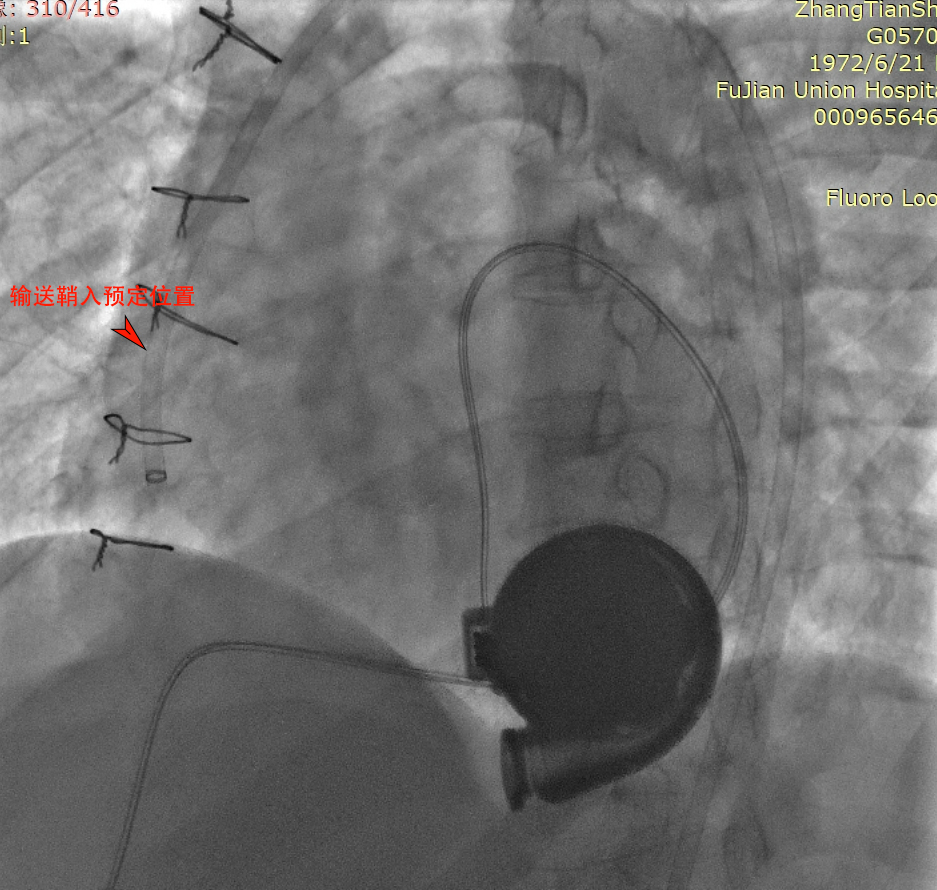
Blocking umbrella implantation process
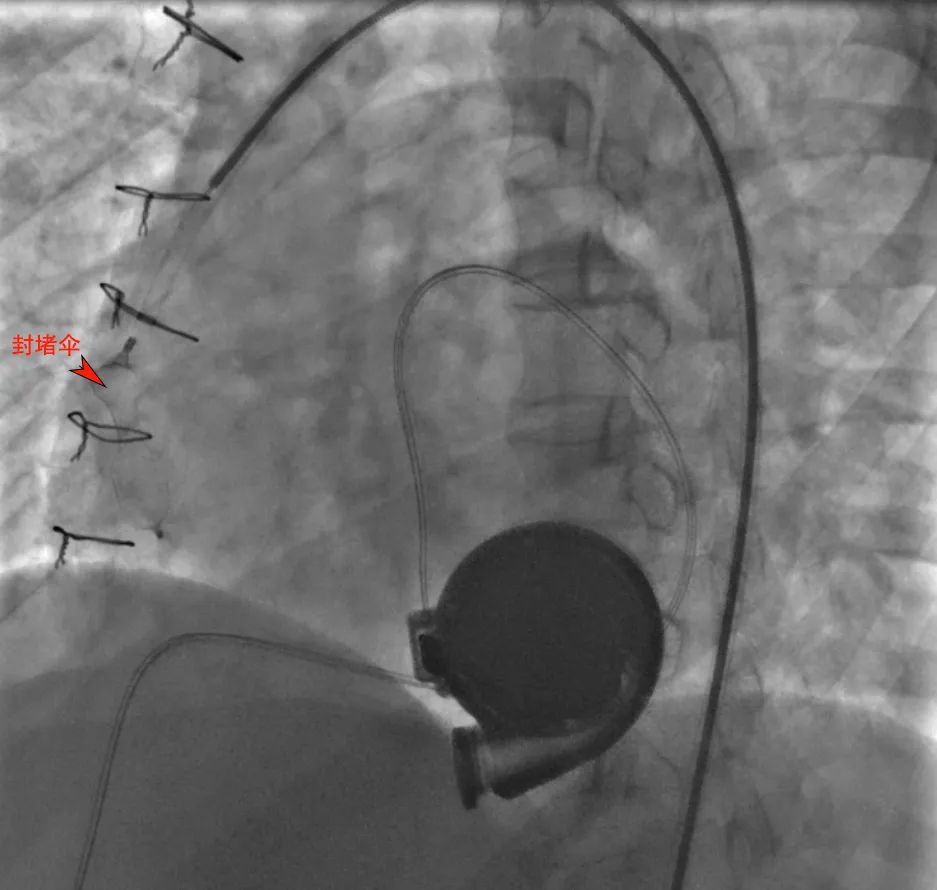
Blocking Umbrella Release
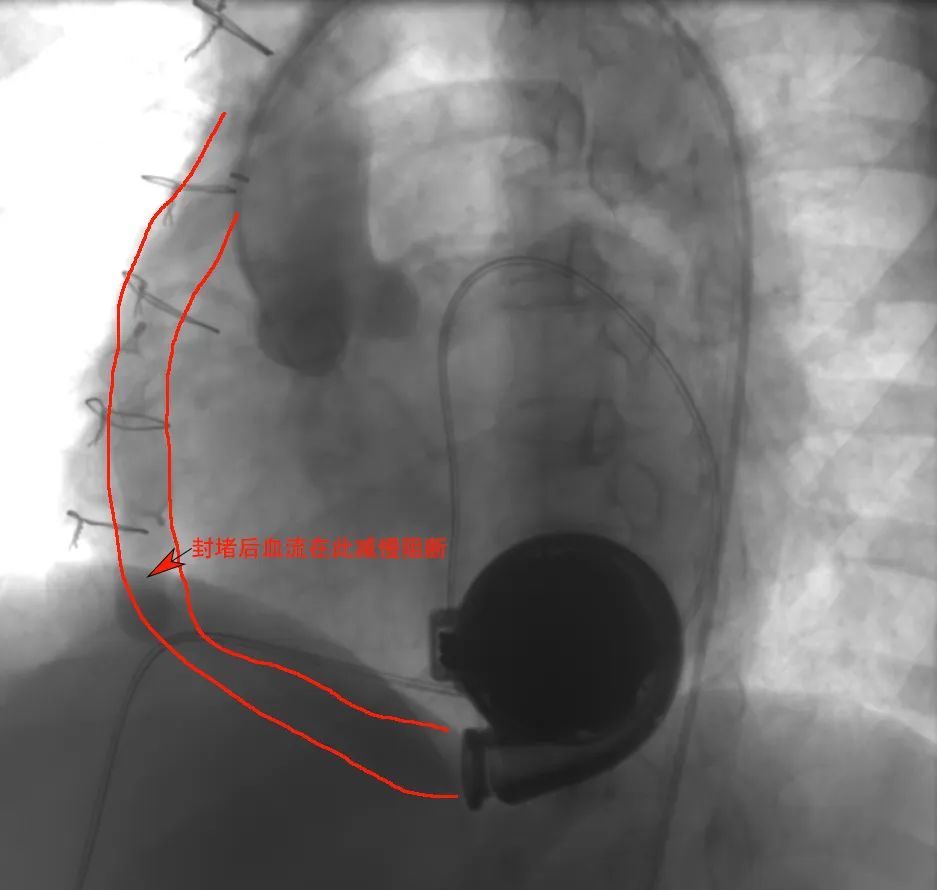
post-occlusion contrast
Prof. Dai Xiaofu said that this is the first case of LVAD withdrawal utilizing percutaneous access blockade in Fujian Province, and a rare report in China. The procedure reflects the technological innovation and leadership of the cardiac surgery team at Fujian Union Hospital in the field of LVAD, and provides new options and hope for the treatment of patients recovering from heart failure after LVAD implantation.
Expert Introduction
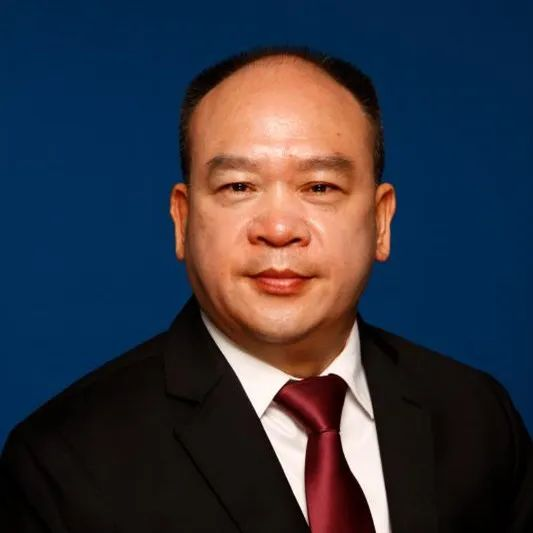
Chen Liangwan
Union Hospital of Fujian Medical University
Professor and doctoral supervisor of Fujian Medical University. Standing Committee Member of Thoracic and Cardiovascular Surgery Branch and Member of Organ Transplantation Branch of Chinese Medical Association, Vice Chairman of Aortic Clamping Specialty Committee of Chinese Physicians Association, Member of Organ Transplantation Physicians Branch, Standing Committee Member of Cardiovascular Surgeons Branch, Member of Endoluminal Angiology Specialty Committee, Deputy Director of Integrated Cardiovascular Surgery Committee of the First Committee of Integrative Medicine Branch and Member of Provincial Hospitals Branch, Fujian Provincial Medical Association Vice President, Vice Chairman of Thoracic and Cardiovascular Surgery Society, Vice Chairman of Organ Transplantation Branch and Standing Member of Science Popularization Branch, Member of Minimally Invasive Cardiovascular Surgery Specialized Committee of the National Committee of Cardiovascular Disease Specialists, Member of Standing Committee of Fujian Provincial Association for Science and Technology, Member of Editorial Boards of the Chinese Journal of Medical Sciences, Chinese Clinical Journal of Thoracic and Cardiovascular Surgery, Chinese Journal of Extracorporeal Circulation, China Cardiovascular Disease Research and Organ Transplantation. Chinese Journal of Thoracic and Cardiovascular Surgery He is a visiting professor of Zhongshan People's Hospital affiliated to Sun Yat-sen University, a visiting professor of Linyi People's Hospital, and a visiting professor of Guangdong Provincial Hospital of Traditional Chinese Medicine, University City Hospital.
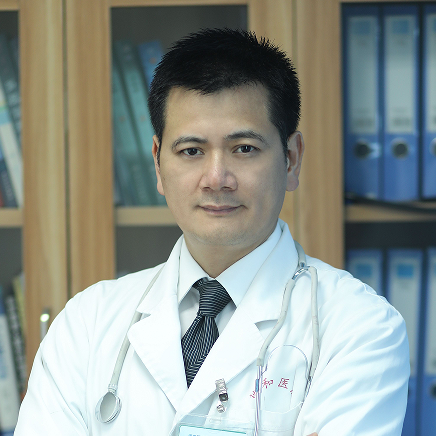
Dai Xiaofu
Union Hospital of Fujian Medical University
Professor, Chief Physician, Doctoral Supervisor, Director of Department of Cardiac Surgery, Union Hospital of Fujian Medical University. He is the chairman of the Cardiovascular Surgery Branch of Fujian Straits Medicine and Health Exchange Association, the chairman of the Cardiovascular Surgery Committee of the Taiwan-Hainan Medical Association of the Hai Medical Association, the deputy director of the Fujian Provincial Quality Control Center of Cardiovascular Surgery, the vice president of the Cardiovascular Surgery Branch of Fujian Provincial Physicians' Association, the vice president of the Fujian Provincial Thoracic Surgery Youth Committee, the youth committee of Thoracic Surgery of the Chinese Medical Association, the youth committee of Thoracic Surgery of China Medical Doctor Association He is also a member of the Youth Committee of Thoracic Cardiac Surgery of Chinese Medical Association, Youth Committee of Thoracic Cardiac Surgery of Chinese Physicians Association, Member of National Minimally Invasive Cardiovascular Surgery Expert Committee, Member of Youth Committee of National Cardiovascular Disease Expert Committee, Member of the Editorial Board of Organ Transplantation and Chinese Organ Transplantation.


